Introduction
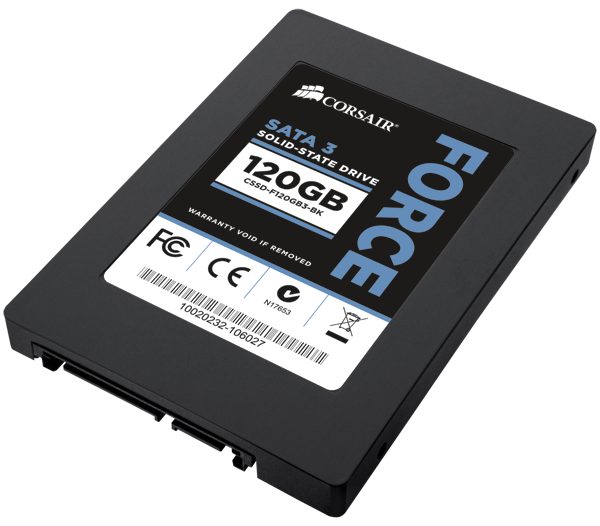
There are so many places where I can start this introduction, I'm not even sure where to start. I am feeling a bit chatty today, so we'll cover it all. You wouldn't accept anything less, I'm sure!
Let's knock this whole recall thing out first. On June 16th Porsche recalled 1,702 911-Series sports cars. If you drive the cars hard, your center locking wheel hub will wear, your wheel could loosen and fall off. So, basically 1700 speed freaks like me who routinely drive 2x the speed limit were in danger of having their wheels fall off while doing 140 on the highway (err, I mean on the track), crash and die. That's what I call a recall.
Around the same time, Corsair shipped hardware review nerds a handful of samples. At the same time the first retail products were being shipped to retail and e-tail businesses. The reviewers found a previously unknown stability issue with their samples and reported the issue. Normally review nerds get products before resellers, but in this round a few cases of products were sold. I don't know how many drives ended up in the hands of end users, but I doubt it was 1,700 in the short amount of time they were available. I do know the end results aren't as potentially deadly as the Porsche issue. Yes, technically it was a recall, but it was handled quickly, openly and honestly. Corsair really showed what kind of company they are while handling this issue. The new, issue free drives are hitting e-tail, retail and hardware review nerds alike this week.
Just recently we had our first taste of the new SandForce SF-2281 controller paired with IMFT 25nm asynchronous NAND flash. On the surface the OCZ Technology Agility 3 looks pretty good; the 240GB model that we looked at is rated for 525MB/s read and 500MB/s write. The quoted maximum 4K random write IOPS are 85,000, an amazing achievement, but after a run of our new Fill Test Benchmark we weren't all that impressed any more.
The Corsair Force 3 is based on the same SF-2281 controller and async flash combination as the OCZ Agility 3. Both drives also use the same firmware and I can only assume the same programming. That's about where the similarities end. Corsair uses a different PCB design, includes a desktop adapter bracket and at the time of writing has an even lower cost when comparing equal 120GB capacity sizes.
Now that I have your attention, let's find out if Corsair managed to deliver a drive that performs like a proper SandForce drive should.
Specifications, Pricing and Availability
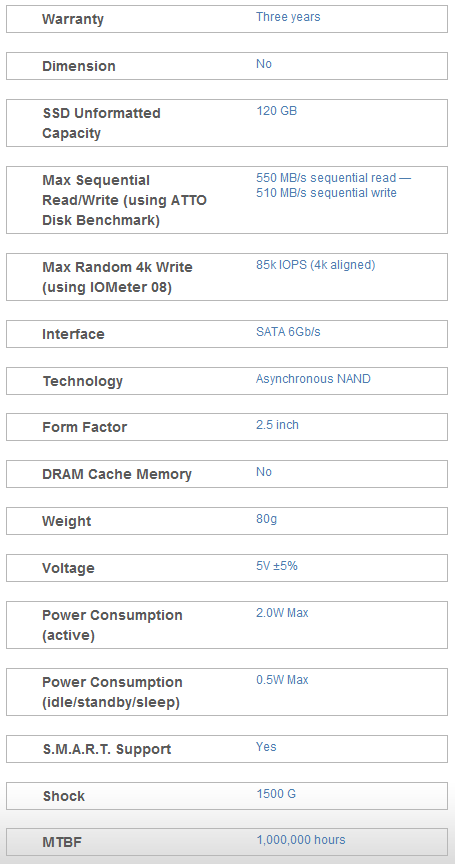
The Corsair Force 3 is available now in two capacity sizes; 120GB and 240GB. The specifications above were taken from the 120GB product page on Corsair's website. The maximum read speed for the 120GB drive is 550MB/s and the maximum write speed is 510MB/s. For you to achieve these speeds you will need a motherboard with native SATA III or a high quality PCIe add-on controller. Many enthusiasts, power users and gamers with an X58 chipset / Marvell SATA III have chosen to forgo P67 and Z68 and are holding out for X79. Your X58 board will not allow the Corsair Force 3 to reach maximum performance, but you can use the drive in your current system and take it with you into X79 at the end of the year.
There was one area on Corsair's specification sheet that caught me off guard. Under the Dimension heading the spec reads NO. That's all, just NO. Corsair is pleading the 5th (Amendment of the US Constitution). With the OCZ drive fiasco I don't blame them, but I would just change it to Proper 2.5" form factor that will work in your notebook. We'll verify this later since Corsair wants to be shy.
The Corsair Force 3 is a budget minded SandForce SF-2281 controlled solid state drive. In order to reduce the cost, Corsair used IMFT 25nm asynchronous flash. At the time of writing the Force 3 120GB that we're reviewing here today is listed at Newegg for 179.99 USD after a 30 Dollar mail in rebate. Just a few weeks ago we were excited about seeing 120GB SF-1200 drives listed at 200 USD, so the price is really amazing. The 240GB Force 3 was listed at Newegg for 449.99 at the time of writing. The 240GB model is priced on par with the OCZ Agility 3, but the 120GB drive undercuts the OCZ price by 15 USD.
Unlike the Agility 3, the Corsair Force 3 ships with a standard 2.5" to 3.5" desktop adapter bracket. With so few SATA III enabled notebooks on the market, I feel many of these drives will be headed to desktop systems and most of these systems will need an adapter bracket. Also standard with the Corsair Force 3 is a three year warranty.
The Packaging
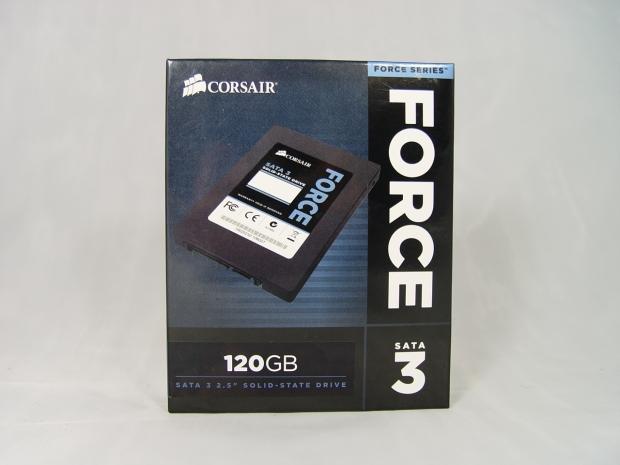
You may have noticed that Corsair didn't have a Force 2 product. The product packaging explains the Force 3; the 3 is for SATA III. I'm digging the new retail package for the Force 3; it's a bit different than the other Corsair SSD packages.
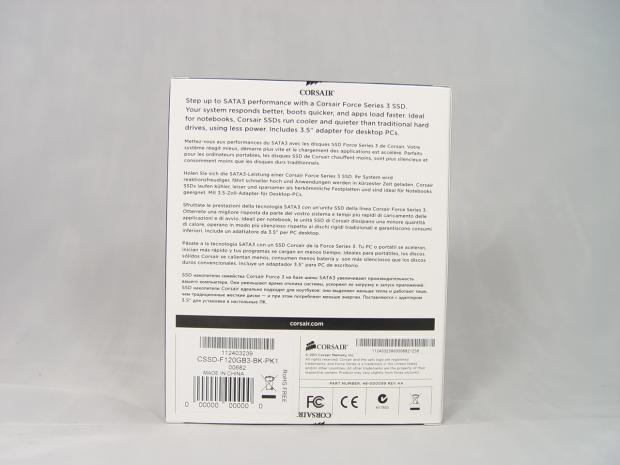
The back of the package has some general information about the new Force 3 products, but we couldn't find any performance information other than better, quicker and faster.
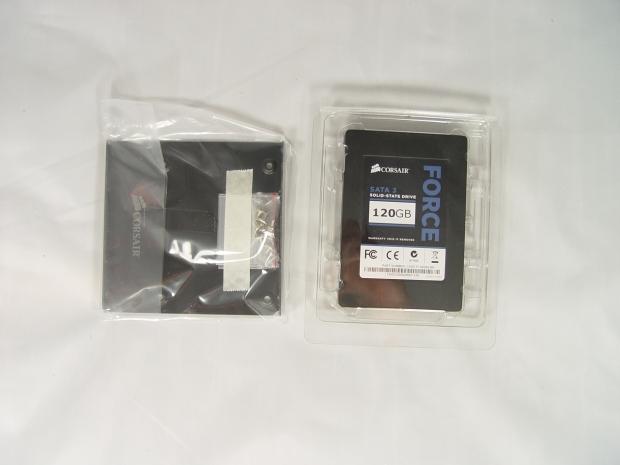
The outside of the package is different, but the inner package is the same. Corsair never had an issue in this area and the inner package does a good job of protecting the drive and keeping the desktop adapter bracket from scratching the finish of the drive.
The Corsair Force 3 120GB
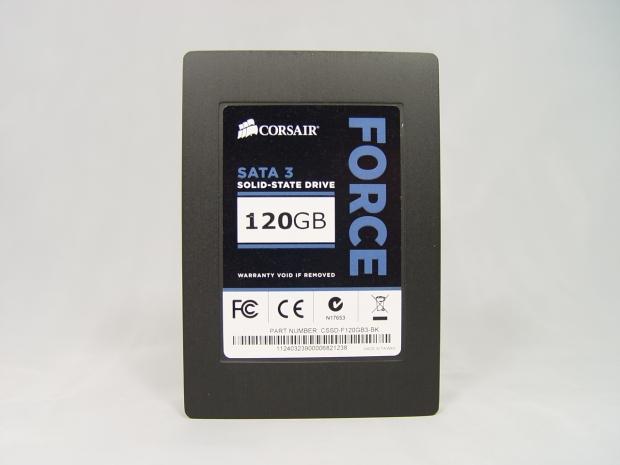
Here we get our first look at the Corsair Force 3. The drive has an aluminum case that fits in my Lenovo notebooks. This is Corsair's tried and true case that has been used on many of their SSD products.
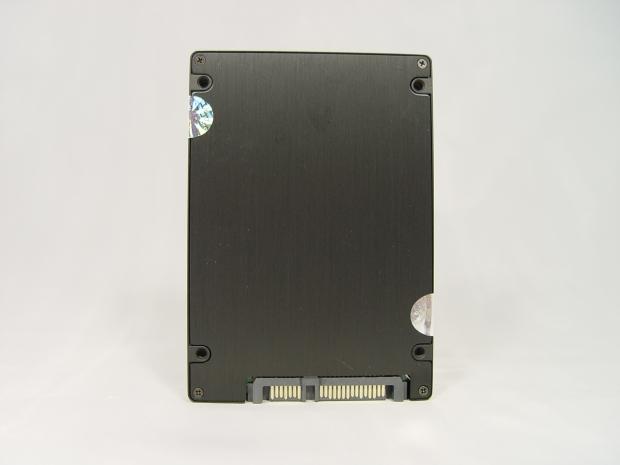
With the serial number and drive capacity listed on the front label there isn't much to show on the back other than the four mounting points that are located where they should be.
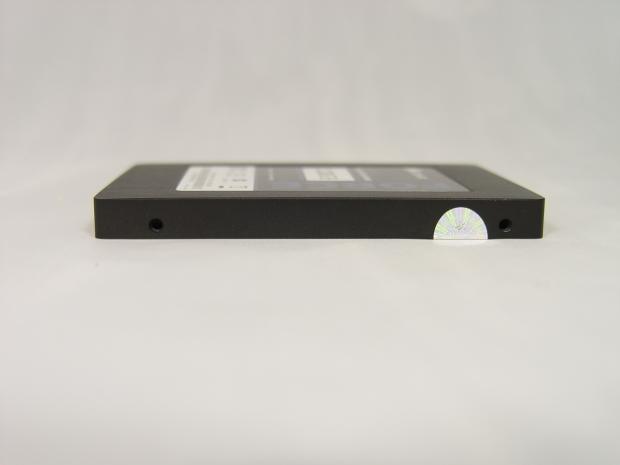
On the side of the Force 3 we also found the standard mounting points.
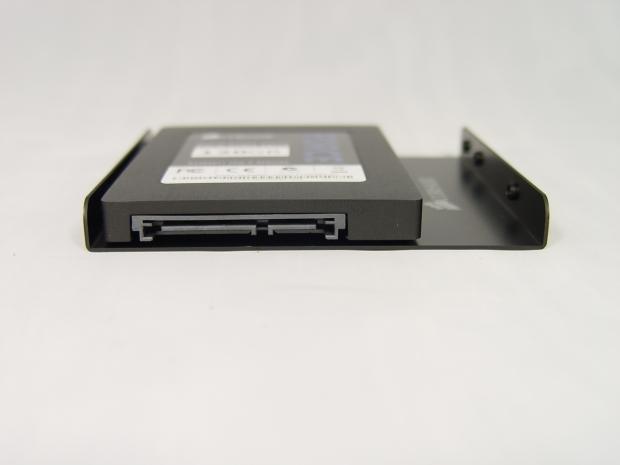
The SATA power and data ports are where they should be and the desktop adapter bracket offsets the drive so they are in line with your other 3.5" drives.
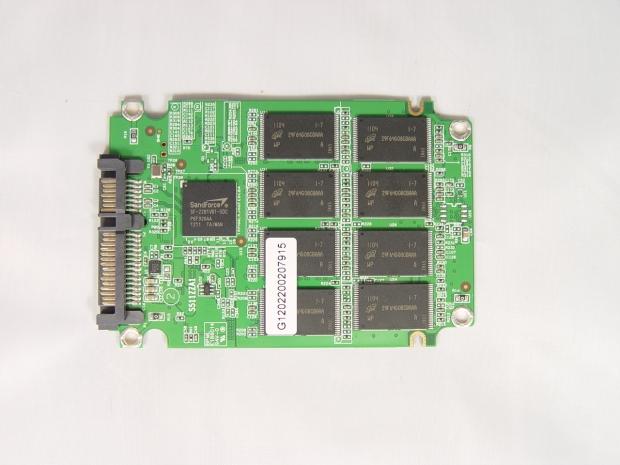
On the inside we found a different PCB than what OCZ used on the Agility 3. The Corsair Force 3 uses a lot more surface mount components. On this side we found the SandForce SF-2281 controller and eight of the sixteen IMFT 25nm flash chips.
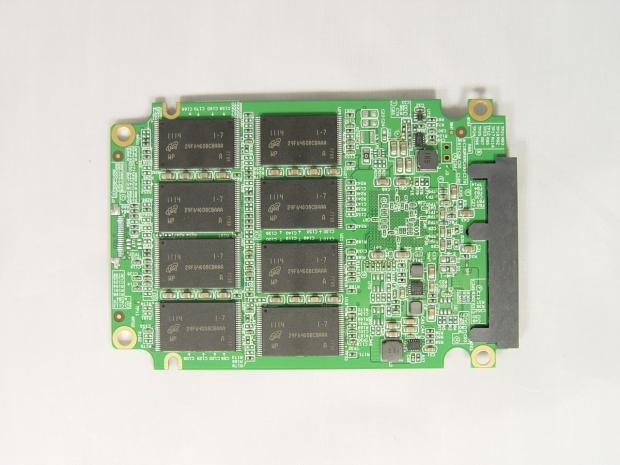
The other side also has several surface mount components and the eight flash chips.
Test System Setup and ATTO Baseline Performance
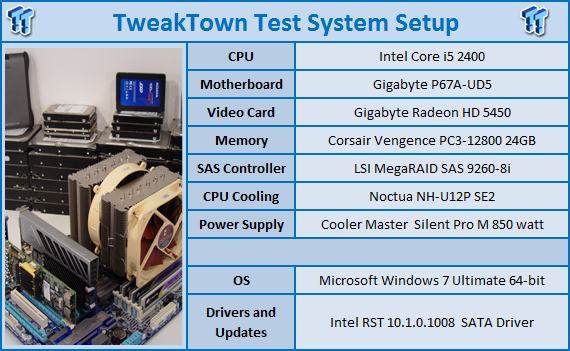
We would like to thank the following companies for supplying and supporting us with our test system hardware and equipment: AVADirect, GIGABYTE, Cooler Master, LSI, Corsair and Noctua.
You can read more about TweakTown's Storage Product Testing Workstation and the procedures followed to test products in this article.
In order to get the most out of the Corsair Force 3 Series drives you'll need a motherboard with native SATA II capabilities.
ATTO Baseline Performance
Version and / or Patch Used: 2.34
ATTO is used by many disk manufacturers to determine the read and write speeds that will be presented to customers.
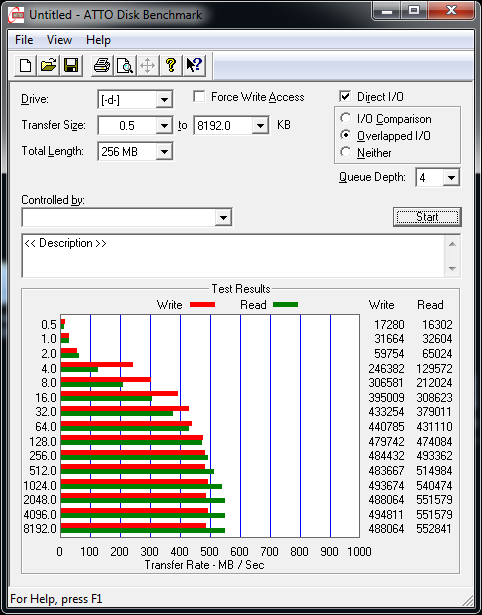
Using ATT at its default 4 queue depth we achieved just over 550MB/s read and just under 500MB/s write. Corsair uses a queue depth of 10 and other manufacturers are starting to do the same when quoting their performance figures.
Benchmarks - HD Tune Pro
HD Tune Pro
Version and / or Patch Used: 4.00
Developer Homepage: http://www.efdsoftware.com
Product Homepage: http://www.hdtune.com
HD Tune is a Hard Disk utility which has the following functions:
Benchmark: measures the performance
Info: shows detailed information
Health: checks the health status by using SMART
Error Scan: scans the surface for errors
Temperature display
HD Tune Pro gives us accurate read, write and access time results and for the last couple of years has been gaining popularity amongst reviewers. It is now considered a must have application for storage device testing.
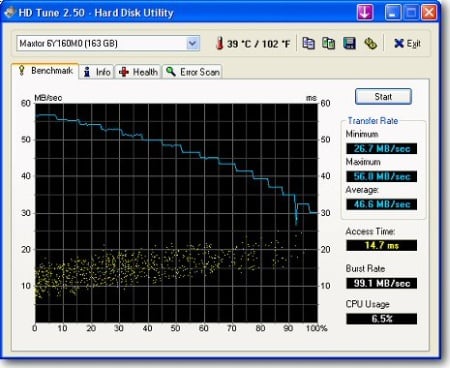
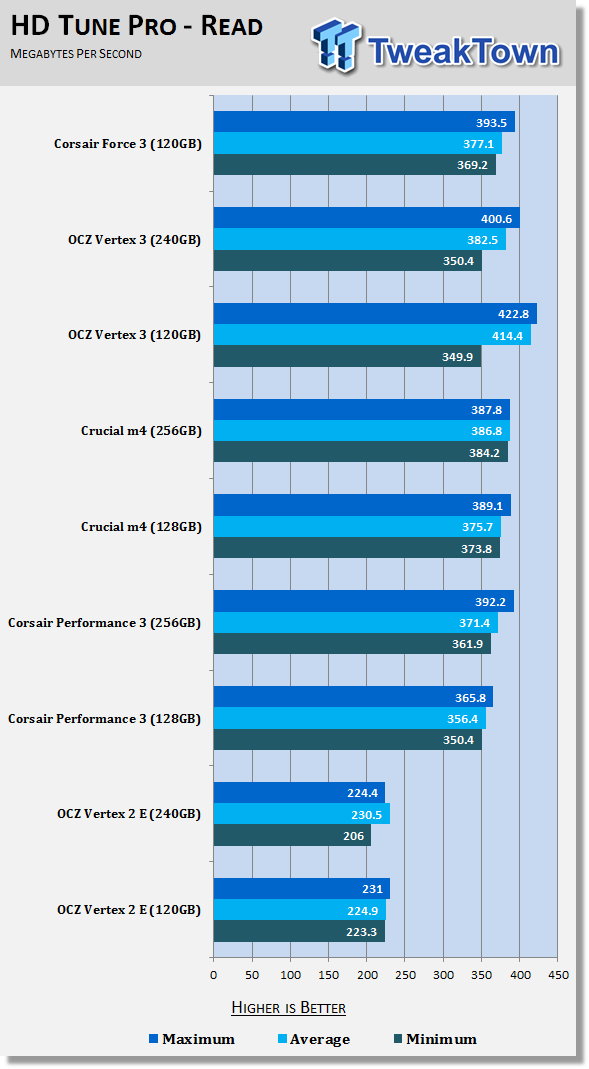
The Corsair Force 3 starts out really well turning in an average read speed across of 377MB/s.
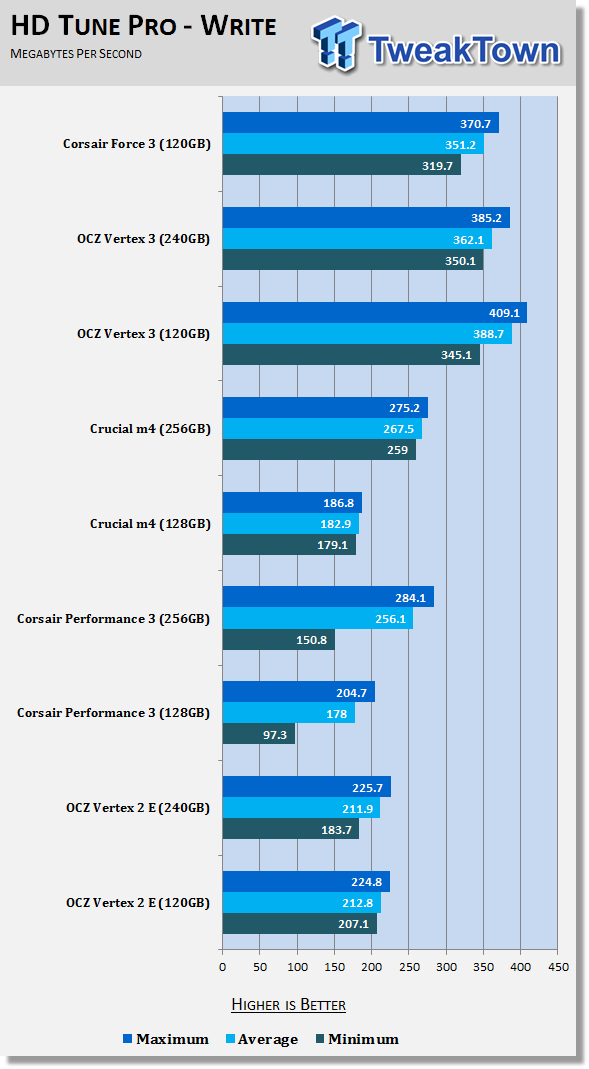
The write speed across the drive was impressive as well; in this test we observed an average of 351MB/s and a maximum of 370.
Benchmarks - AIDA64 Random Access Time
AIDA64 Random Access Time
Version and / or Patch Used: 1.60
Developer Homepage: http://www.aida64.com
Product Homepage: http://www.aida64.com
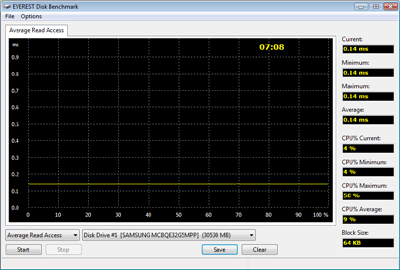
AIDA64 offers several different benchmarks for testing and optimizing your system or network. The Random Access test is one of very few if not only that will measure hard drives random access times in hundredths of milliseconds as oppose to tens of milliseconds.
Drives with only one or two tests displayed in the write test mean that they have failed the test and their Maximum and possibly their Average Scores were very high after the cached fills. This usually happens only with controllers manufactured by JMicron and Toshiba.
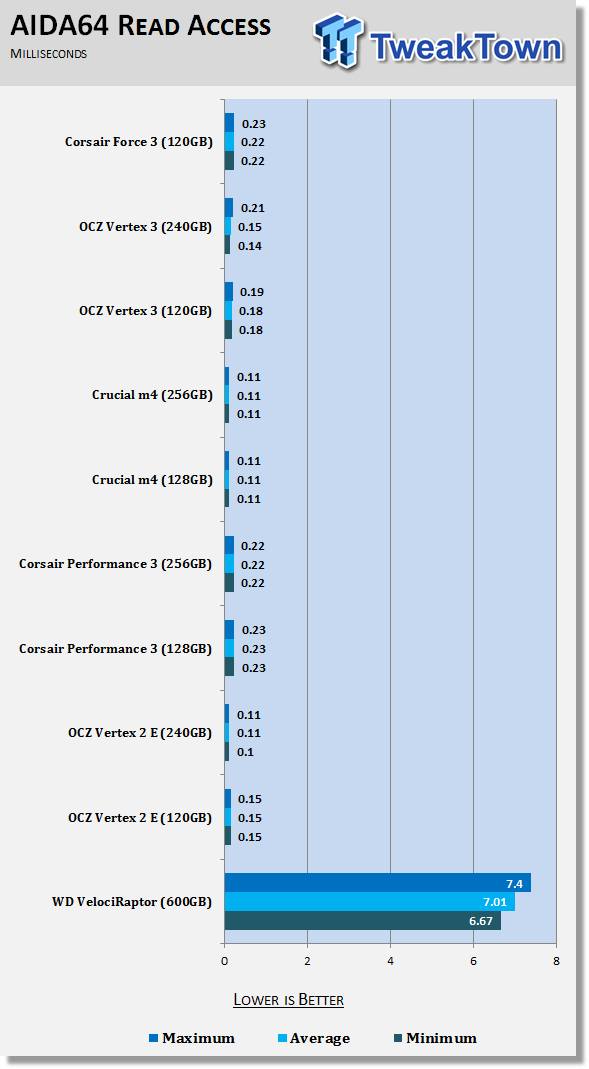
SSDs are marketed as these really fast drives that can move large amounts of data quickly. A good example is the Corsair Force 3 that we are looking at today. The marketing guys say, "Hey look at this, 550MB/s". The truth is that you will really only see that 550MB/s a few times each day. What you will feel every time you sit down at your computer is the data access time. SSD access time is measured in microseconds. Traditional mechanical drives are measured in milliseconds and the difference in the way your system feels is amazing.
The Corsair Force 3 is able to access data at .22 of a millisecond. At the bottom of the chart we list one of the quickest spinners, the WD VelociRaptor. The VelociRaptor 600GB takes an average of 7.01 milliseconds to read the same small piece of data. When you launch a program you are asking the drive to play back several pieces of data and the latency adds up quickly. SSDs will deliver your data in most cases before your finger is lifted from your mouse button.
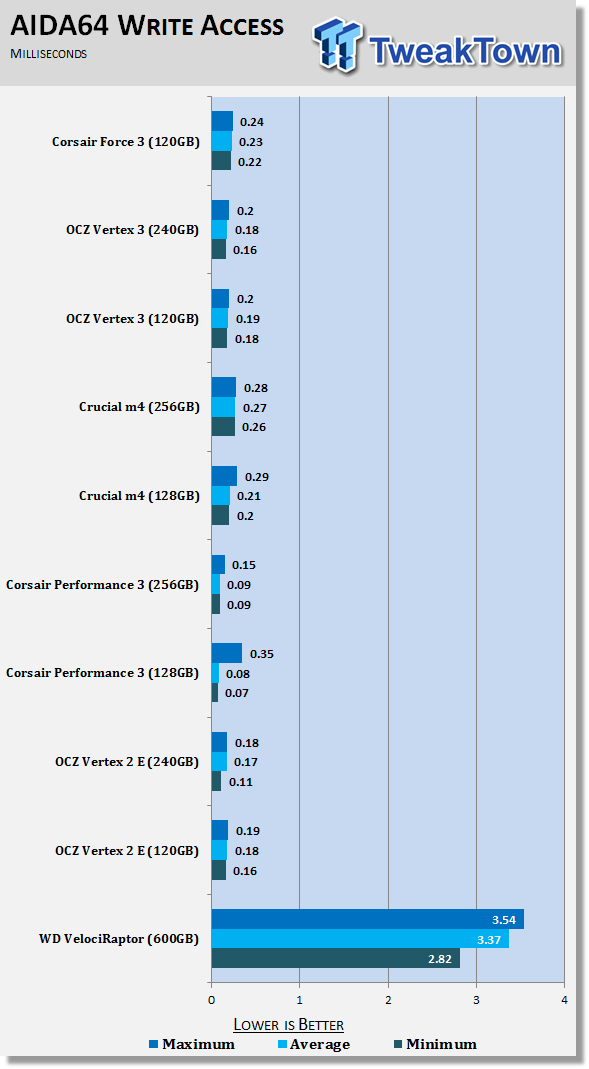
The same is true when it comes to writing data to the drive. Here we see the Corsair Force 3 writing data at an average rate of .23ms. When you write data you are usually reading it from a slower source, so in many cases the SSD is actually limited by the source. Because of this the write latency isn't as important for day to day activities, but it is nice to see the SandForce SF-2281 controller doing a really good job at this task without using a DRAM buffer.
Benchmarks - CrystalDiskMark
CrystalDiskMark
Version and / or Patch Used: 3.0 Technical Preview
Developer Homepage: http://crystalmark.info
Product Homepage: http://crystalmark.info/software/CrystalDiskMark/index-e.html
Download here: http://crystaldew.info/category/software/crystaldiskmark
CrystalDiskMark is a disk benchmark software that allows us to benchmark 4K and 4K queue depths with accuracy.
Key Features:-
* Sequential reads/writes
* Random 4KB/512KB reads/writes
* Text copy
* Change dialog design
* internationalization (i18n)
Note: Crystal Disk Mark 3.0 Technical Preview was used for these tests since it offers the ability to measure native command queuing at 4 and 32.
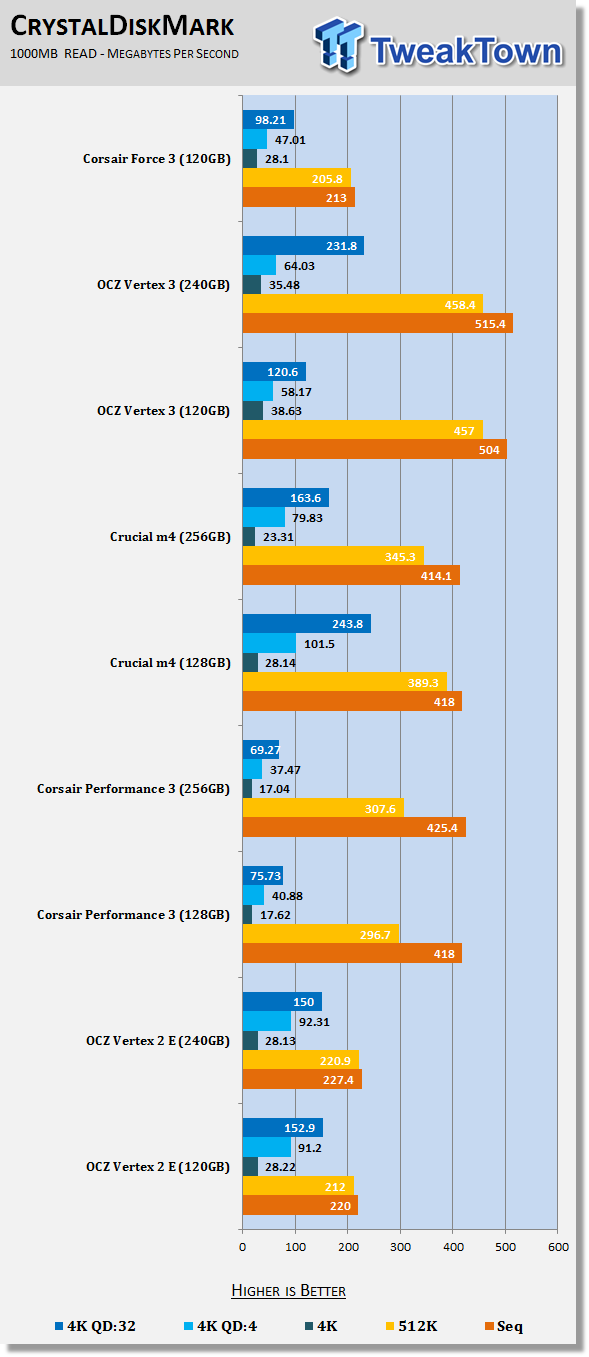
In CDM we are looking at the 4K and 4K NCQ performance. This is where we start to see differences between the 25nm IMFT synchronized and a synchronized drives. Since CDM is a synthetic benchmark the results are exaggerated a bit because we are hitting this area a lot harder than you normally would in the real world. I'll explain more on the final page.
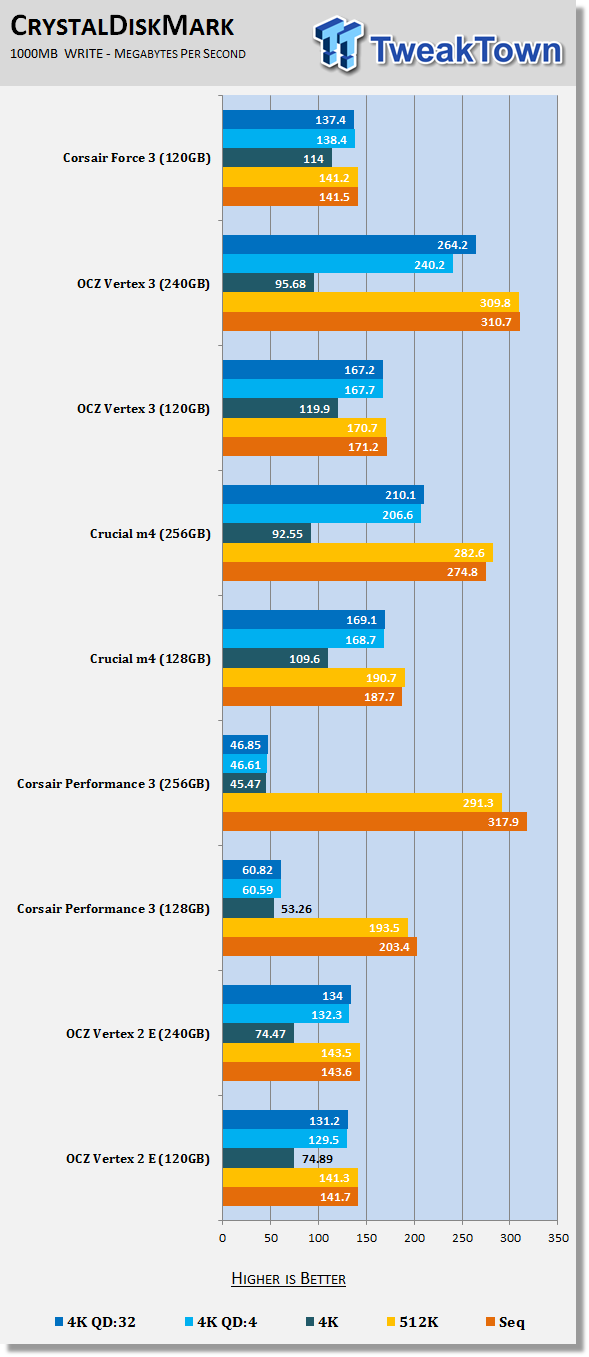
I ran this test on three different systems; one based on P67 and two based on Z68. In all of the tests the Corsair Performance 3 hit a brick wall abruptly around 140MB/s. It didn't really matter how many commands we sent to the drive, 140MB/s was the stopping point.
Benchmarks - PCMark Vantage Hard Disk Tests
PCMark Vantage - Hard Disk Tests
Version and / or Patch Used: 1.0.0
Developer Homepage: http://www.futuremark.com
Product Homepage: http://www.futuremark.com/benchmarks/pcmark-vantage/

PCMark Vantage is the first objective hardware performance benchmark for PCs running 32 and 64 bit versions of Microsoft Windows Vista. PCMark Vantage is perfectly suited for benchmarking any type of Microsoft Windows Vista PC from multimedia home entertainment systems and laptops to dedicated workstations and high-end gaming rigs. Regardless of whether the benchmarker is an artist or an IT Professional, PCMark Vantage shows the user where their system soars or falls flat, and how to get the most performance possible out of their hardware. PCMark Vantage is easy enough for even the most casual enthusiast to use yet supports in-depth, professional industry grade testing.
FutureMark has developed a good set of hard disk tests for their PCMark Vantage Suite. Windows users can count on Vantage to show them how a drive will perform in normal day to day usage scenarios. For most users these are the tests that matter since many of the old hat ways to measure performance have become ineffective to measure true Windows performance.

HDD1 - Windows Defender
HDD2 - Gaming
HDD3 - Windows Photo Gallery
HDD4 - Vista Startup
HDD5 - Windows Movie Maker
HDD6 - Windows Media Center
HDD7 - Windows Media Player
HDD8 - Application Loading
Last year we put a lot of faith in PCMark's Vantage HDD tests and luckily the results backed the commentary, but today's drives are more refined, tuned a bit for specific tasks.
On the surface the Corsair Force 3 looks like a direct competitor to the OCZ Vertex 3 and Crucial m4, but benchmarks lie.
PCMark Vantage - Drives with Data Testing
For a complete breakdown on the Drives with Data Testing please read this article. You will be able to perform this test at home with the files provided in the article - full instructions are included.
Brief Methodology
SSDs perform differently when used for a period of time and when data is already present on the drive. The purpose of the Drives with Data testing is to show how a drive performs in these 'dirty' states. SSDs also need time to recover, either with TRIM or onboard garbage collection methods.
Drives with Data Testing - 25%, 50%, 75% Full States and Dirty / Empty Test
Files needed for 60 (64GB), 120 (128GB), 240 (256GB)
60GB Fill - 15GB, 30GB, 45GB
120GB Fill - 30GB, 60GB, 90GB
240GB Fill - 60GB, 120GB, 160GB
Empty but Dirty - a test run just after the fill tests and shows if a drive needs time to recover or if performance is instantly restored.

HDD1 - Windows Defender
HDD2 - Gaming
HDD3 - Windows Photo Gallery
HDD4 - Vista Startup
HDD5 - Windows Movie Maker
HDD6 - Windows Media Center
HDD7 - Windows Media Player
HDD8 - Application Loading
The real benefit to the more expensive synchronized (and Toggle) flash drives like the Corsair Force GT and OCZ Vertex 3 is how they react when data is present on the drive. Most SSDs lose performance when data is on the drive. This is why we see so many people ask in forums why they've lost so much performance on their SSD or ask how they can regain performance.
Car people have a saying; there is no replacement for displacement. The same is true for SSDs. If you buy a 240GB SSD and keep 80GB of data on it, you have 160GB free for background activities. If you have a 120GB SSD and use 80GB of space, you only have 40GB available. The 240GB drive will be faster even though both drives are only holding 80GB of data.
When we reviewed the OCZ Agility 3 we were shocked to see how much speed was scrubbed off when the drive was 25% full (actually using 60GB of space). The drop off is massive and that's the same thing we found on the Corsair Force 3. When you start studying the chart closely you will see that the Crucial m4 128GB is actually a little quicker than the asynchronized SandForce SF-2281 drives, Force 3 and Agility 3.
I'm going to go into a lot more detail on this in the conclusion.
Benchmarks - AS SSD
AS SSD Benchmark
Version and / or Patch Used: 1.2.3577.40358
Developer Homepage: Alex Intelligent Software
Product Homepage: Alex Intelligent Software
Download here: http://www.alex-is.de/PHP/fusion/downloads.php?cat_id=4&download_id=9
AS determines the performance of Solid State Drives (SSD). The tool contains four synthetic as well as three practice tests. The synthetic tests are to determine the sequential and random read and write performance of the SSD. These tests are carried out without the use of the operating system caches.
In all synthetic tests the test file size is 1GB. AS can also determine the access time of the SSD, the access of which the drive is determined to read through the entire capacity of the SSD (Full Stroke). The write access test is only to be met with a 1 GB big test file. At the end of the tests three values for the read and write as well as the overall performance will be issued. In addition to the calculated values which are shown in MB/s, they are also represented in IO per seconds (IOPS).
Note: AS SSD is a great benchmark for many tests, but since Crystal Disk Mark covers a broader range of 4K tests and HD Tune Pro covering sequential speeds, we will only use the Copy Benchmark from AS SSD.
- Copy Benchmark
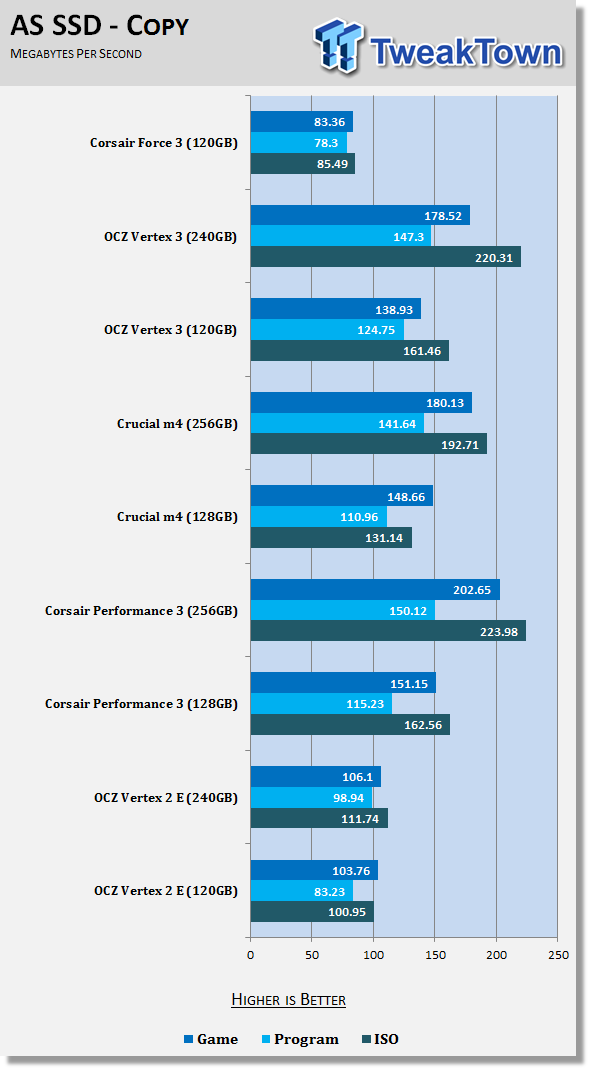
If you look back to the CrystalDiskMark 4K tests and recall the write wall we hit, you will understand why we couldn't achieve better results when transferring data from one area of the drive to the other.
Benchmarks - Passmark
Passmark Advanced Multi-User Tests
Version and / or Patch Used: 6.1
Developer Homepage: http://www.passmark.com
Test Homepage: http://www.passmark.com
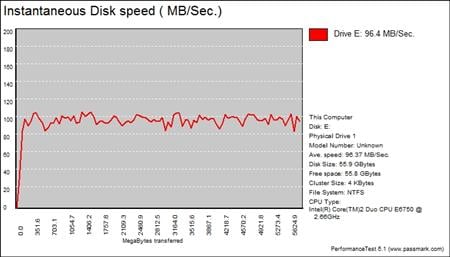
Many users complain that I/O Meter is too complicated of a benchmark to replicate results so my quest to find an alternative was started. Passmark has added several multi-user tests that measure a hard drives ability to operate in a multi-user environment.

The tests use different settings to mimic basic multi-user operations as they would play out on your server. Variances is read / write percentage as well as random / sequential reads are common in certain applications, Web Servers read nearly 100% of the time while Database Servers write a small amount of data.
The Workstation test is the only single user environment and will be similar to how you use your system at home.
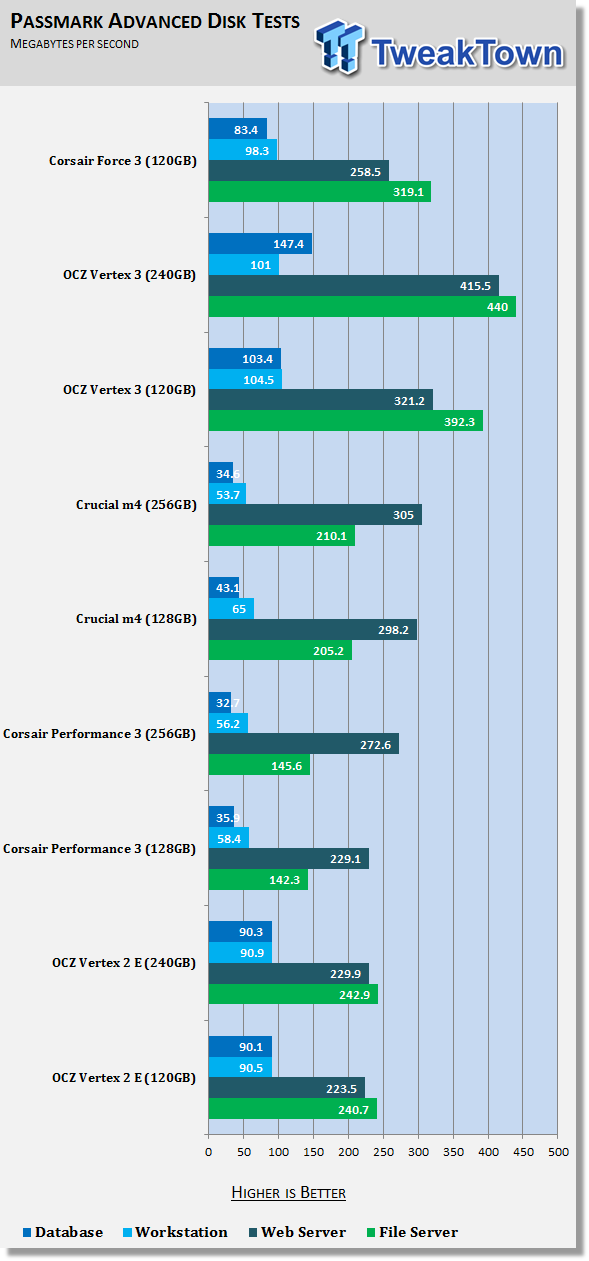
The Corsair Force 3 is a consumer drive that is based on several enterprise technologies. The controller is built by SandForce, a company who's vision is to make the most amazing enterprise SSDs ever developed and the company is doing a really good job at that.
Final Thoughts
We have a lot to cover in the conclusion today, but most of the information I want to relay to you has to do with the price / performance ratio.
The OCZ Agility 3 240GB I reviewed was tore apart in the conclusion. When I was writing the review the price was higher than its MSRP, the drive wouldn't fit in any of the notebooks I own or any I had on hand from friends who drop theirs off for a refresh and virus removal, and the drive doesn't come with a desktop adapter bracket. The final Value score for the Agility 3 was scored at a 40 and I have even recommended people buy a Vertex 2 rather than a SATA III Agility 3.
The Corsair Force 3 is built a lot like the Agility 3. Both drives use SF-2281 controllers, IMFT 25nm asynchronous flash and the result is performance drops like a brick as soon as a realistic amount of data is put on the drive. That's where the similarities stop, though. The Corsair Force 3 costs less than the OCZ Agility 3, already fits in your notebook without an exchange and comes with a desktop adapter bracket. With so few SATA III notebooks on the market, most of these drives are headed straight to desktops. If your drive doesn't come with a bracket then you are most likely going to pay for one.
Then there is that whole brick dropping thing. At this point in time I'm going to push the issue and tell you what the rest of the SSD review world won't, just look at all the awards already given blindly to products where the reviewer didn't explore performance degradation or even tell you that a product might not even fit in your run of the mill notebook. The asynchronous flash SandForce SF-2281 controlled SSDs are not the same as the more expensive drives using synchronous or toggle flash. All of these drives are being marketed with nearly identical specifications with charts that show nearly identical performance. The truth is a much different story.
Now that I've told you what these drives aren't, let me tell you what they are. The Corsair Force 3 120GB we looked at today is available from Newegg for 179.99 after a 30 Dollar mail-in-rebate. Newegg lists the Corsair GT, a drive with the same SandForce SF-2281 controller, but paired with Toshiba Toggle Flash for 289.99. The price difference is around 110 USD for the same capacity; this is a significant difference for a 120GB drive and enough to really make a difference. At this time last year SandForce SF-1200 based drives like the Corsair Force cost around 200 to 215 USD for 120GB models. Our fill test tells us that the new Force 3 120GB is a little faster than the original Force 120GB when filled to 50% of capacity. So, you get a little more real world performance and pay a bit less. What's not to like about that?
The Corsair Force 3 sits in the middle between last year's fastest products and this year's fastest products. Performance wise, these drives lean closer to last year's offerings while being marketed as closer to this year's flagship performance products. This is where we take issue and feel you should be informed prior to finding the real difference. Obviously Corsair isn't trying to sidestep the performance degradation issue from pairing the SF-2281 with async flash; they sent us the Force 3 knowing we use the fill test. Corsair actually played a role in helping us develop the test to showcase the capabilities of their Performance 3 products.
What does this say about Corsair? In the introduction I told you about how quickly Corsair reacted when an issue was found on their first batch of Force 3's. In the conclusion I pointed out that Corsair knew we'd actually review their drive and not give it a quick glance over like so many others. Corsair is the company that I wish all others were like. If there were a benchmark for this sort of thing, Corsair would routinely achieve top marks.
SandForce: The Phantom Menace or A New Hope? was the title to a chapter of an article I wrote last year. I can now answer that question and use history to predict the future. The first SandForce SF-1200 120GB drives I reviewed last year scored around 37K Marks in PCMark Vantage's collective HDD tests. The last SF-1200 120GB drive I tested scored 47K Marks. In a years' time SandForce significantly increased the performance of their drives through firmware updates. At the same time Team SandForce products saturated the market with extremely high speed drives that lowered prices. In the same time it took SandForce to boost performance, companies like Corsair lowered the cost of ownership by 50%. You can count on SandForce and Corsair to increase the performance of the Force 3 and other async equipped drives; that's what they do.
The Corsair Force 3 120GB at its current 179 USD price point, desktop adapter bracket and company ethics of putting customers before profit is a good bargain. You won't get 550MB/s in the real world or even Force GT with Toshiba Toggle flash speeds when transferring files around, but you get ultra-low access times that you feel while doing everything else. So much emphasis is placed on big numbers that look good on spread sheets and specification charts while so little placed on what really counts. The Corsair Force 3 is all about giving you the feel of instant action when double clicking and giving it at a price point that's affordable.

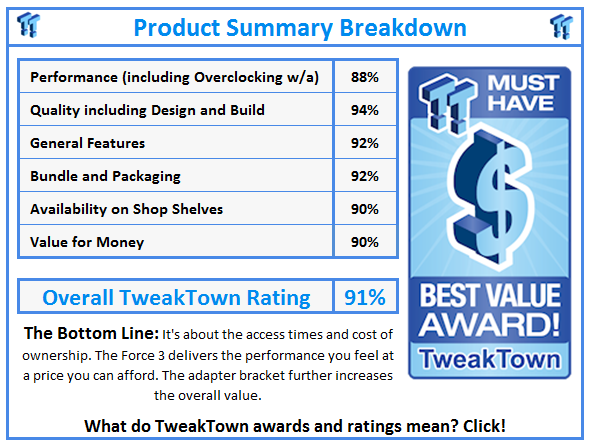
 United
States: Find other tech and computer products like this
over at
United
States: Find other tech and computer products like this
over at  United
Kingdom: Find other tech and computer products like this
over at
United
Kingdom: Find other tech and computer products like this
over at  Australia:
Find other tech and computer products like this over at
Australia:
Find other tech and computer products like this over at  Canada:
Find other tech and computer products like this over at
Canada:
Find other tech and computer products like this over at  Deutschland:
Finde andere Technik- und Computerprodukte wie dieses auf
Deutschland:
Finde andere Technik- und Computerprodukte wie dieses auf